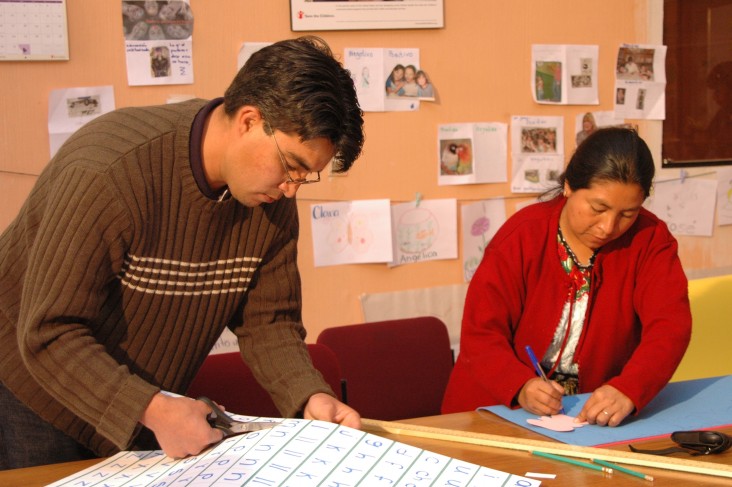
Troubled with gangs and high crime rates, Villa Nueva, a large suburb of Guatemala City, is one of the country’s most violent areas. Although the number of cases involving domestic violence, sexual crime, and murder of women continues to rise, few are reported or investigated. In addition, criminal justice and civil society institutions lack the understanding and capacity to raise awareness of the problem and help women access the justice system.
USAID is raising awareness of women’s legal rights and creating resources to help female victims of violence. Two graduates of USAID’s gender and law diploma program, family therapist Vilma Dinora Morales and Julissa Baldetti, developed a program to train community leaders as paralegals. About 50 women and men who received their certifications established a network to provide legal services to over 500 women from 15 neighborhoods in the Villa Nueva area. Because few materials on violence were available in their communities, the new paralegals set out to develop some that would help victims of crime fight back.
The paralegals developed a manual on intra-family violence that they now use to assist victims of violence and raise public awareness on the issue. The manual has colorful graphics and text that readers with low levels of literacy can easily understand. The manual’s first part describes violence and its effects on women and the home, and the second teaches readers how to assist victims of violence, focusing on understanding rights, legal mechanisms and community resources.
Now the paralegals are implementing a monitoring and evaluation system to track use of the manual and to gauge the effectiveness of their work in communities throughout Villa Nueva. The paralegals record each of the cases and follow-up with institutions and community organizations such as the police to ensure that services are delivered in a timely way.
Previously, little help was available to victims of violence; now the paralegals help nearly 150 women every day live safer and healthier lives.







Comment
Make a general inquiry or suggest an improvement.